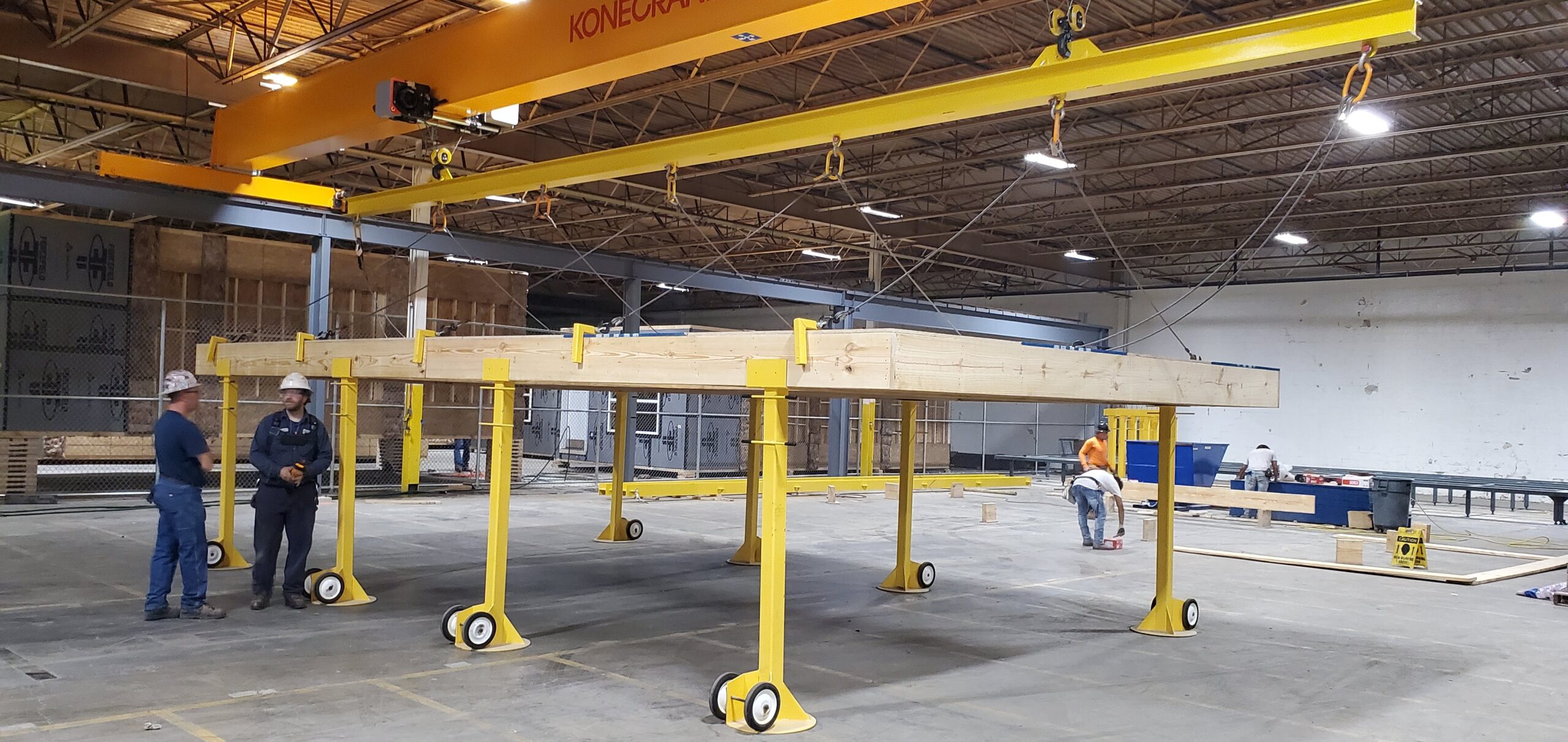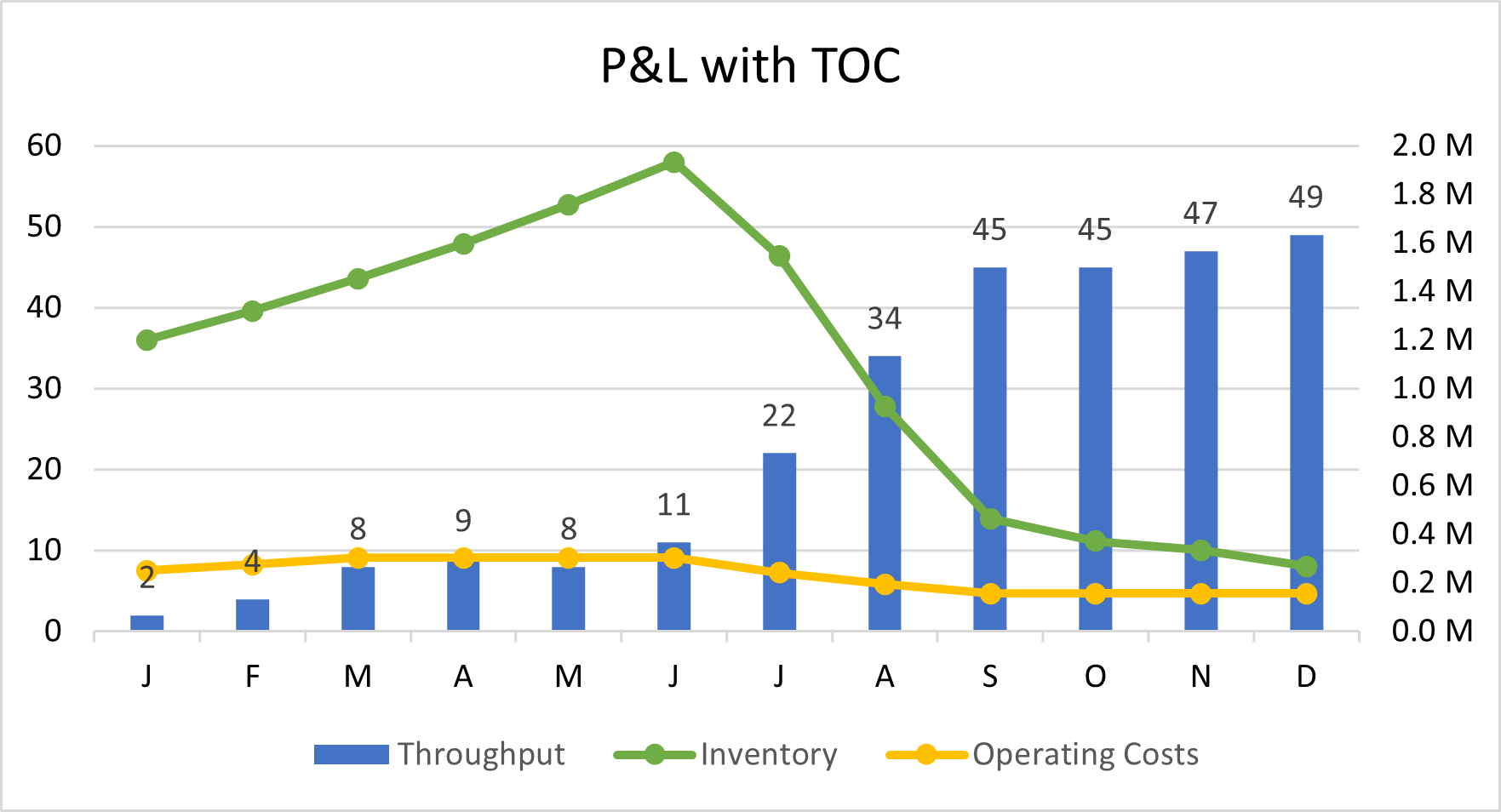Effective management of Profit and Loss (P&L) is crucial for the success of any organization. By leveraging the Theory of Constraints (TOC), businesses can optimize their financial performance through strategic improvements in throughput, inventory management, and operating costs. Here’s how TOC principles can guide you in managing your P&L more effectively:
Increase Throughput
Throughput, defined as the rate at which a system generates money through sales, is a key driver of profitability. To increase throughput, focus on:
- Identifying and Exploiting Constraints:
- Pinpoint the primary constraint (bottleneck) in your production or service process. This is the factor that limits your system’s capacity to generate more output.
- Optimize the performance of this constraint by ensuring it operates at maximum efficiency. This might involve scheduling adjustments, resource allocation, or process improvements.
- Streamlining Processes:
- Simplify and standardize workflows to reduce variability and increase efficiency.
- Eliminate non-value-added activities that do not directly contribute to throughput.
- Enhancing Product/Service Quality:
- Focus on delivering high-quality products or services that meet customer needs and expectations. Satisfied customers are more likely to generate repeat business, contributing to higher throughput.
Reduce Inventory
Inventory represents tied-up capital and potential waste if not managed properly. Reducing inventory levels can free up cash flow and reduce holding costs. To manage inventory effectively, consider:
- Implementing Buffer Management:
- Use TOC’s buffer management techniques to maintain optimal inventory levels. Buffers protect against variability and ensure that materials are available when needed without overstocking.
- Just-In-Time (JIT) Practices:
- Adopt JIT inventory practices to align material procurement with production schedules. This minimizes excess inventory and reduces storage costs.
- Improving Forecasting Accuracy:
- Utilize accurate demand forecasting methods to predict inventory needs more precisely. This helps in maintaining the right amount of stock and avoiding both shortages and excesses.
Reduce Operating Costs
Operating costs directly impact the bottom line. By managing these costs efficiently, organizations can improve profitability. TOC offers several strategies to achieve this:
- Process Optimization:
- Streamline operations to eliminate waste and inefficiencies. This includes optimizing workflows, reducing downtime, and improving resource utilization.
- Resource Allocation:
- Allocate resources effectively to support the constraint. Avoid unnecessary expenditures on non-critical areas and focus investments where they will have the most impact.
- Continuous Improvement:
- Foster a culture of continuous improvement where employees are encouraged to identify and address inefficiencies. Regularly review processes and implement changes to reduce costs and improve productivity.
Conclusion
Managing P&L with TOC involves a strategic focus on increasing throughput, reducing inventory, and minimizing operating costs. By identifying and optimizing constraints, streamlining processes, and adopting efficient inventory and cost management practices, businesses can achieve significant improvements in financial performance. TOC provides a powerful framework to transform operations and drive sustainable profitability.
If your organization is looking to enhance its P&L management, consider integrating TOC principles to unlock its full potential and achieve remarkable financial success.







